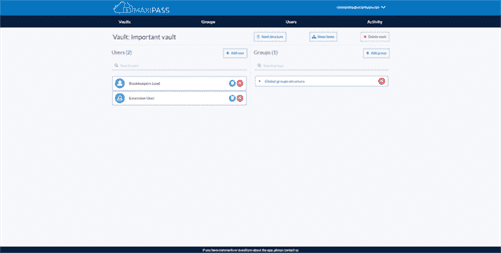For a Web application, it represents the Web API or Unit Test project. This layer has an implementation of the dependency injection principle so that the application builds a loosely coupled structure and can communicate to the internal layer via interfaces. Onion Architecture has great practical value, particularly for creating expansive, intricate software systems.
- The presentation layer will ask this layer if the current user, that is trying to do this action, has the permission to execute it.
- However, without coupling, our systems wouldn’t do anything useful, but this architecture creates unnecessary coupling.
- We now know that Onion Architecture has a significant role in implementing a domain-driven design.
- This means that our service instances are only going to be created when we access them for the first time, and not before that.
- The following are the core principles that developers should keep in mind while designing their application solution.
Note, that infrastructure is still present as a fragment of external onion circle. I guess it is done to make things easier to read by someone, used to layered approach. Infrastructure is visually broken into pieces, all of those are application boundaries.
Application services
Traditional layered architecture may struggle to cleanly implement CQRS, as separation of read and write operations could blur the boundaries between layers. This is another variant that I have noticed in many huge solutions. Let’s say you have around 100 interfaces and 100 implementations. Do you add all these 100 lines of code to the Startup.cs to register them in the container? That would be insane from the maintainability point of view. To keep things clean, what we can do is, Create a DependencyInjection static Class for every layer of the solution and only add the corresponding.

In addition to ensuring that the program is operating properly, this also makes it simpler to find and repair errors. These guidelines are crucial because they free developers from the burden of sifting through a maze of disorganized code in order to swiftly add new features and solve errors. This layer can reference any project from the inner layer. All the technologies are completed isolated and are easy to swap to another. Notice, here all the technology that can be swap in the future is not explicitly implemented here.
The Essence of Onion Architecture
You can find the source code of this implementation on my GitHub. Using dependency inversion throughout the project, depending on abstractions (interfaces) and not the implementations, allows us to switch out the implementation at runtime transparently. We are depending on abstractions at compile-time, which gives us strict contracts to work with, and we are being provided with the implementation at runtime. The difference between N-layered architecture and Onion which I’ve noticed so far that you have a single place for contracts and it really helps you to follow Open/Close principle.
In this architecture, the Presentation Layer generally holds the part that the User can collaborate with, i.e, WebApi, MVC, Webforms, etc. Business Logic is likely the main piece of this whole arrangement. It holds all the rationale connected with the Business prerequisites.
Unfolding infrastructure in the Onion architecture
As a result, it solves the problem of separation of concerns while still allowing the Controller to perform database access logic. The Onion Architecture relies heavily on the Dependency Inversion principle. Outer layer data formats should not be used by inner layers. Data formats used in an API can vary from those used in a DB for persistence.

So, the only place in your application that actually creates objects that are capable of doing IO is the application’s entrypoint. The Infrastructure Layer uses them, but is does not create them. In Onion Architecture, the database is just a infrastructure detail. The rest of your code shouldn’t worry if you are storing your data in a database, in a file, or just in memory.
Benefits of Onion Architecture:
We use MakePaymentService (a domain service) to decouple the payment system from other part of this system. To organize business logic for our project, we used Domain-Driven Design (DDD). In fact, while there are numerous definitions of microservices, there is no single clear and unified definition. Broadly speaking, microservices are web services that create a type of service-oriented architecture. Now we only have one more layer left to complete our Onion architecture implementation. The flow of dependencies dictates what a certain layer in the Onion architecture can do.

It is the outermost layer and contains peripheral aspects such as UI and tests. It represents the Web API or Unit Test project in a Web application. This layer implements the dependency injection principle, allowing the application to design a loosely linked structure and communicate with the internal layer using interfaces. The domain model is at the center of Domain-Driven Design or development, which thoroughly understands a domain’s procedures and regulations. It creates software for complicated requirements by closely connecting the implementation to a changing model of fundamental business ideas.
What if my language sucks?
We will build a RESTful API that follows the Onion architecture, with ASP.NET Core and .NET 5. Testing is still problematic as you need to invert the dependency control. Controlling what has the facade is pointing to needs to move to the consumer, onion architecture not the provider. This allows that consumer to swap things out for testing, or to change implementations without the provider having to know about it. Connect and share knowledge within a single location that is structured and easy to search.

Other parts of outer circle (UI/Tests) are also application boundaries. Proposed by Jeffrey Palermo, the Onion Architecture advocates for the centralization of the domain model and use of interfaces and dependency inversion to promote decoupling and testability. Let’s look at one of the most popular Architecture in ASP.NET Core Applications.
Key Concepts of Onion Architecture:
I understood the focus on interfaces and inversion of control. The N-Layer architecture was introduced to make sure that expert developers can work on their core expertise layers. For eg – a front-end developer can work on presentation layers and back-end developers can work on business layer and data access layers. In both cases, you would have to create a new version of your DAL. But how would you account for these two different layers in your business layer?
This layer contains all logic related to UI (User Interface). Your HTML pages, javascript files, styles, fonts must be here. It is also responsible to show the necessary information to users. For every service, we will write the CRUD operation using our generic repository. Click on project reference now and select the Domain layer.
More Articles on HashDork:
The quick essence of that chapter is given in the Mark’s article. This article also nicely aligns layered, onion, and ports and adapters architectures, so i recommend you to read it before proceeding with current article. Database Independent – Since we have a clean separation of data access, it is quite easy to switch between different database providers. Now, let’s work on the Core Layers starting from the Domain Project.


